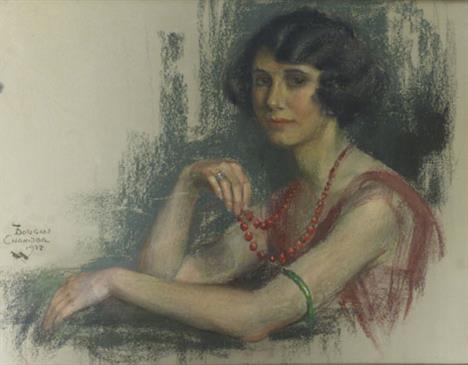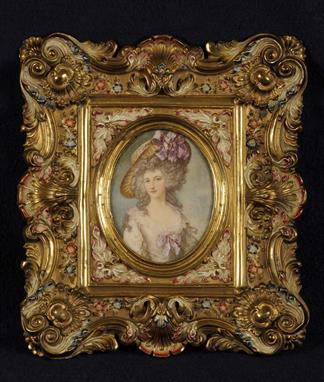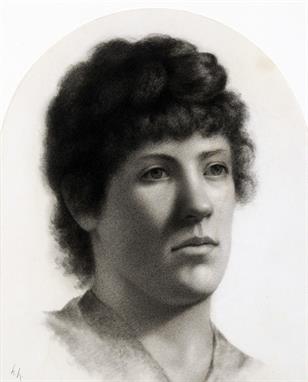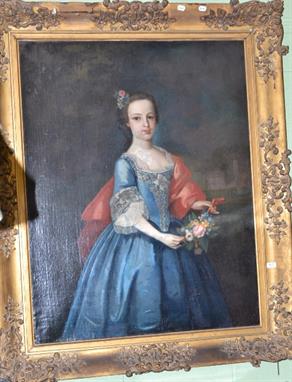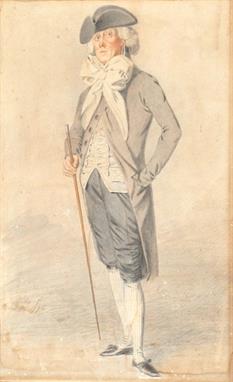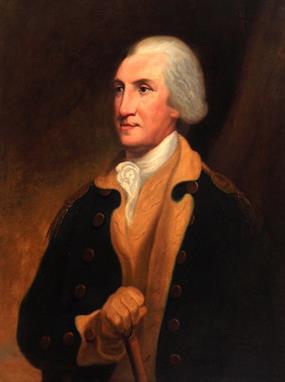283284 Preisdatenbank Los(e) gefunden, die Ihrer Suche entsprechen
283284 Lose gefunden, die zu Ihrer Suche passen. Abonnieren Sie die Preisdatenbank, um sofortigen Zugriff auf alle Dienstleistungen der Preisdatenbank zu haben.
Preisdatenbank abonnieren- Liste
- Galerie
-
283284 Los(e)/Seite
Uganda 1898-1902 Issue 2a. artist`s composite essay executed six times size on board (172x242mm.) in a design similar to that issued, the portrait photographic with portions highlighted in Chinese white, the remainder of the design hand-painted in black, white and shades of grey; a couple of small pieces of paintwork flaked off, otherwise fine. A unique and highly attractive item of artwork. Photo VAT Status: Margin Scheme View Terms & Conditions
Continental porcelain pedestal urn and cover in the Furstenburg manner together with a Vienna porcelain trinket jar and cover, the lid painted with head and shoulder female portrait, a 19th Century Coalbrookdale floral encrusted posy basket with rural landscape scene and a pair of 19th Century porcelain cabinet cups with Celeste Bleu banding and jewelled decoration, (most a/f) (5)
A Victorian ebonised credenza, the ivory strung moulded top over similar frieze with applied portrait plaques, panelled door with oval classical ceramic plaque, flanked by gilt metal reeded columns with acanthus capitals, mirrored panels, convex glass doors enclosing shelves, plinth base raised on painted turned feet, the whole with gilt metal beading, 182cm wide x 107cm high x 43cm deep
Horace Hone (1754/6-1825 `A Young Man in Military Uniform` Watercolour on ivory, 4.6 cm high (oval miniature) signed (in monogram) and dated lower right: HH/1785 Footnote: The sitter is identified as `AM` in seed pearls on the reverse. The portrait is framed by a woven strap, the buckle also represented by seed pearls. Hone exhibited at the Royal Academy between 1772 and 1822. In 1795 he was appointed miniature painter to the Prince of Wales.
Douglas Chandor (1897-1953), A quarter length portrait of a debutante, Signed and dated 1927, Pastels, 54 x 69 cm CONDITION REPORT: good but with some surface damage PLEASE SEE ADDITIONAL IMAGES ADDITIONAL INFO: some watermarks around signature, some minor surface scratches, would benefit from re-framing
Chalmers A. : The British Essayists - with Prefaces Historical and Biographical. 1803. Vols. 2-16, 18-32, 34-35 & 37-45. Forty-one vols. in total. 12mo. Contemp. full tree calf binding, black gilt labels. Portrait frontis. CONDITION REPORT: Bindings very dry but all intact. Text blocks clean and tight.
Robert Edge Pine (1742-1788) British. Portrait of George Washington (1732-1799) Oil on Canvas, In an Earlier Fine Carved Giltwood Chippendale Style Frame. 33.25” x 25.5”. Sold on behalf of a Private British Collector Provenance: Previously whereabouts unknown, but possibly referred to in 1931 as; ‘November 1927, Messrs. Kennedy & Company, of New York City’, found in France, sold to an American Collector’ (1p.88 item 4) It has been inscribed in ink along the top stretcher ‘Rembrandt Peale (1778-1860)’ and Inscribed ‘Philadelphia’ In the Collection of Alexander Kardo Sessoeff, purchased in New York in February 1952 (relined and restored prior to leaving this collection in the late 1990’s) Private British Collector (who changed the frame to an earlier Chippendale style frame). This, the missing fourth portrait of George Washington (1732-1799) by Robert Edge Pine, was painted during the artist’s stay at Mount Vernon between April 28th and 16th May 1785. Dressed in the Uniform of The Continental Army in which Washington had recently served as Commander-in-Chief, with his right hand across his body and resting on the head of a cane, Washington is not surrounded by symbols of war, or in the context of battle but still as a powerful figure of authority. Four portraits of Washington by Pine are known to exist owing to a listing of some of the artists work in an advertisement published in the Pennsylvanian Packet and Daily Advertiser (December 28, 1789) ‘Scheme of a Lottery’ following Pine’s death in 1788 and posted by Mrs Pine before her return to England. The other three portraits (listed below) bear many similarities. The figure of Washington appears in each as three quarter length, facing left, his hand resting on a cane, said to have been presented to him by Louis XVI. The edge of a tent and head of a spear showing in the top right corner. It is in the detail of the epaulettes which differ with only one portraying the three stars signifying the rank of Commander in Chief (Exhibition No.79). Washington, having only recently returned to Virginia in 1783 following an absence of eight years during the American Revolution, appeared to be a reluctant sitter as observed in correspondence to Francis Hopkinson: ’In for a penny, in for a pound is an old adage. I am so hackneyed to the touches of the Painter’s pencil, that I am now altogether at their beck, and sit like patience on a Monument, whilst they are delineating the lines of my face’. His sittings for Pine are widely referred to in his prolific diary entries. On April 28th 1785 he wrote: ‘To Dinner Mr.Pine, a pretty eminent Portrait & Historian Painter arrived in order to take my picture from the life & to place it in the Historical pieces he was about to draw. This Gentleman stands in good estimation as a Painter in England, comes recommended to me from Colo.Fairfax-Mr Morris Govr.Dickenson-Mr.Hopkinson & others.’ However it was not only due to the significant introductions made by Pine’s friends in Bath, George William Fairfax and Samuel Vaughan, both friends, neighbours and patrons, that Washington obliged to sit but also to hear of the artists sympathies to the American State. In a letter dated August 23rd 1784 Fairfax wrote: “Poor Mr Pine is as true a Son of Liberty as ay Man can be…and made so many enemies in this selfish Nation, that he is compelled to go to America to seek bread. Give me leave to reassure you, Sir, that there is not a person in England, that merits a better reception in America than the unfortunately Gentleman who only fault was his good wishes to our Country’” Another driving force for Pine’s move to America in 1784, shortly before these portraits were painted, was due to the lack of recognition for his work in England. It is believed a disagreement with Sir Joshua Reynolds and near expulsion (before himself resigning) from The Chartered Society of Artists lead to his unhappiness in London and following an inheritance from his brother Simon in 1772 he moved to Bath where he remained for eight years. There his disenchantment of Britain intensified and he began to display on canvas his strong political opinions with works such as ‘America’ ;described by his friend Fairfax as “expressive of the great Oppressions and Calamities of America, also the glorious Revolution with which it pleased Heaven to terminate the infernal War.” The lack of engravings as well as Washington’s reference in 1785 as being painted to be later placed in the ‘historical pieces’, enforces the belief that these four portraits were not intended to be a stand alone works, but studies to be incorporated into larger narrative historical scenes; a genre intensely popular in England and of which Pine intended to introduce to America. However, sadly Pine only lived for another four years and many of the great works he did complete were destroyed by fire at Daniel Bowen’s Museum in 1803. Biography of Artist: Much of Pine’s early life is not known, not even his birth date or education but it is clear he was brought up surrounded by art and artists due his father, John Pine (1690-1756) a prominent engraver who specialised in historical events. The earliest recognition of young Pine’s work is documented in 1760 when he won a prize given by the Society for the Encouragement of the Arts for his painting ‘The Surrender of Calais to Richard III. He was married in 1749. Pine’s contemporary Joseph Hopkinson (who also introduced him to Washington) described Pine as: ‘A very small man- morbidly irritable. His wife and daughters were also very diminutive; they indeed were a family of pigmies’. The Other Three Recorded Portraits by Robert Edge Pine of George Washington Oil on Canvas 35 ¾” x 28 ¼” 1817 Purchased in Canada by Henry Brevoort. By descent to J Carson Brevoort, By descent to Grenville Kane, Esq, Tuxedo Park, New York, exhibited Brooklyn 1917 Property of Mrs Rolla D Campbell, Jnr Now the Property of National Portrait Gallery, Smithsonian, Washington DC. Acquired 1980 Exhibited, National Portrait Gallery, November 1 1979-January 6, 1980, No.77 Oil on Canvas 35 ¾” x 29 ¾” Possibly Property of George Washington Philips Property of Benjamin Moran who donated it to City of Philadelphia in his will dated January 27 1887 Now situated in Second Bank National Portrait Gallery, Philedelphia, Pennsylvania Exhibited, National Portrait Gallery, November 1 1979-January 6, 1980, No.78 Oil on Canvas 36” x 30” Property of Godefroy Meyer of Paris (print dealer) as illustrated as ‘Number 56’ in his catalogue of 1913. 1925 Property of Percy A Rockefeller Property of Hayden Bartlett Harris, purchased from Rockefeller 1957 bequeathed to Harris Trust and Savings Bank, Chicago by Hayden Bartlett Harris Property of Jack Warner and Westervelt Company, now on display at the Tuscaloosa Museum, Alabama Exhibited, National Portrait Gallery, November 1 1979-January 6, 1980, No.79 Bilibiography Robert G Stewart, Curator of Painting and Sculpture, Robert Edge Pine, A British Portrait Painter in America, 1784-1788, Published for the National Portrait Gallery by the Smithsonian Institution Press, City of Washington, 1979, for the Exhibition at the National Portrait Gallery, November 1, 1979-January 6, 1980. 1 Morgan, John Hill, and Mantle Fielding, The Life Portraits of Washington and Their Replicas, Philadelphia, 1931.
-
283284 Los(e)/Seite






















